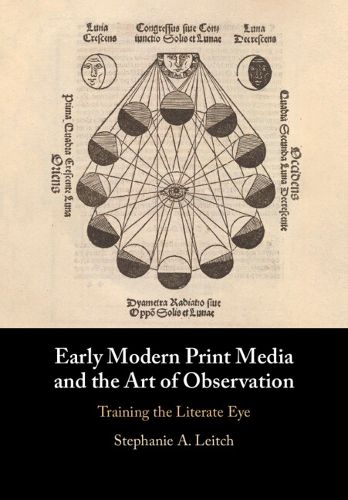Readings Newsletter
Become a Readings Member to make your shopping experience even easier.
Sign in or sign up for free!
You’re not far away from qualifying for FREE standard shipping within Australia
You’ve qualified for FREE standard shipping within Australia
The cart is loading…






Early modern printmakers trained observers to scan the heavens above as well as faces in their midst. Peter Apian printed the Cosmographicus Liber (1524) to teach lay astronomers their place in the cosmos, while also printing practical manuals that translated principles of spherical astronomy into useful data for weather watchers, farmers, and astrologers. Physiognomy, a genre related to cosmography, taught observers how to scrutinize profiles in order to sum up peoples' characters. Neither Albrecht Duerer nor Leonardo escaped the tenacious grasp of such widely circulating manuals called practica. Few have heard of these genres today, but the kinship of their pictorial programs suggests that printers shaped these texts for readers who privileged knowledge retrieval. Cultivated by images to become visual learners, these readers were then taught to hone their skills as observers. This book unpacks these and other visual strategies that aimed to develop both the literate eye of the reader and the sovereignty of images in the early modern world.
$9.00 standard shipping within Australia
FREE standard shipping within Australia for orders over $100.00
Express & International shipping calculated at checkout
Early modern printmakers trained observers to scan the heavens above as well as faces in their midst. Peter Apian printed the Cosmographicus Liber (1524) to teach lay astronomers their place in the cosmos, while also printing practical manuals that translated principles of spherical astronomy into useful data for weather watchers, farmers, and astrologers. Physiognomy, a genre related to cosmography, taught observers how to scrutinize profiles in order to sum up peoples' characters. Neither Albrecht Duerer nor Leonardo escaped the tenacious grasp of such widely circulating manuals called practica. Few have heard of these genres today, but the kinship of their pictorial programs suggests that printers shaped these texts for readers who privileged knowledge retrieval. Cultivated by images to become visual learners, these readers were then taught to hone their skills as observers. This book unpacks these and other visual strategies that aimed to develop both the literate eye of the reader and the sovereignty of images in the early modern world.